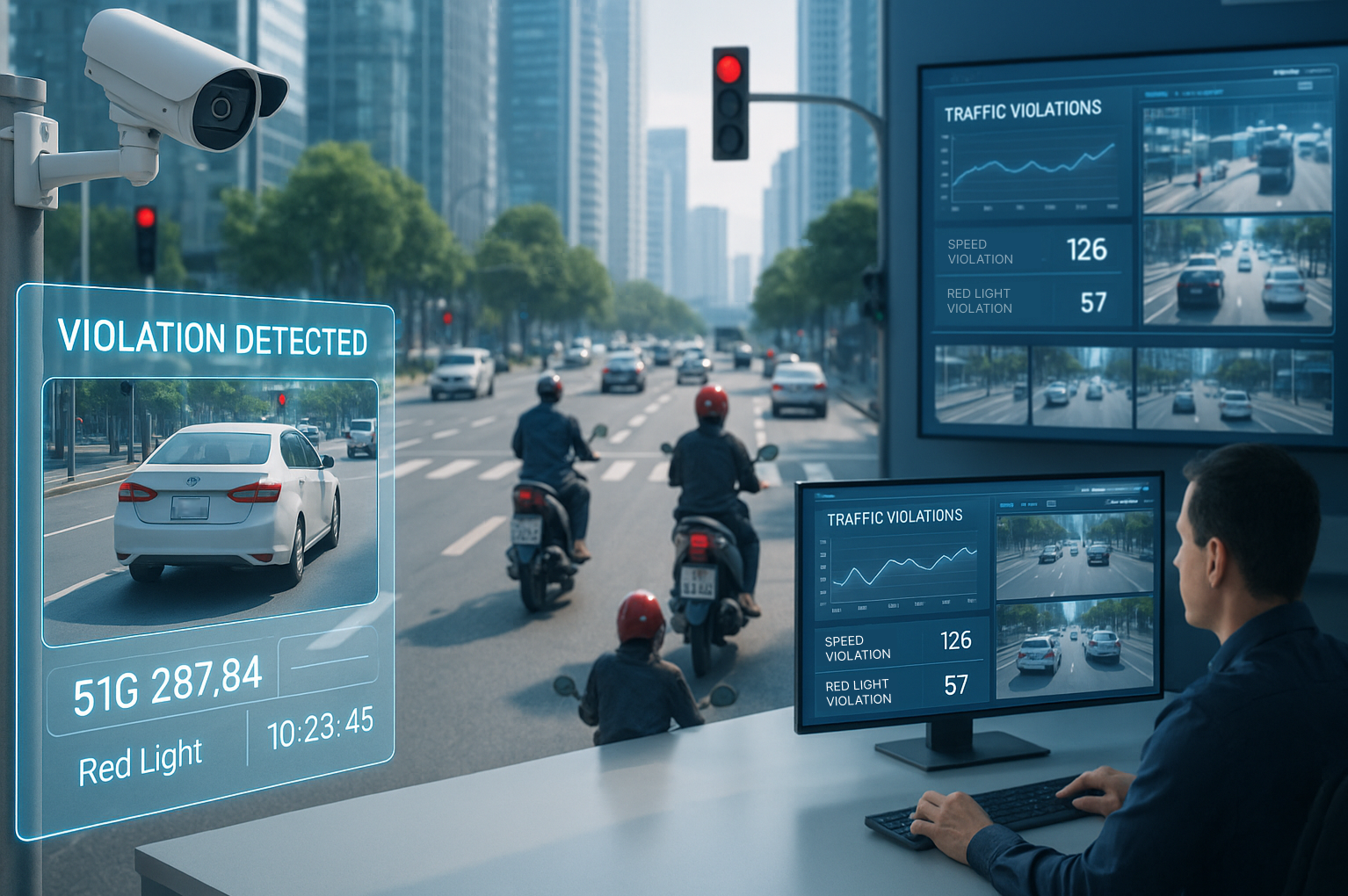The Viettel Traffic Identification (V-TrafficID) is designed to support traffic violation enforcement, particularly for automated (non-stop) ticketing, with capabilities for data extraction and automatic reporting.
Email:
Cskhdn@viettel.com.vnCustomer care:
18008000 - branch 8
The system collects violation data from various sources such as dedicated surveillance cameras and sensors installed along roadways.
It applies AI technologies, Deep Learning, and Big Data analytics to accurately and rapidly detect, recognize, and analyze traffic violations.
Fully complies with national technical standards or industry regulations such as TCCS-AN 69:2020 or TCCS 75:2019/BCA, ensuring legal validity and system compatibility.
Violation information is centrally stored, easily retrievable for operational use, and protected in accordance with data management security requirements.
Easily integrates with other intelligent transportation systems (ITS), peripheral devices, and monitoring centers to create an interconnected and synchronized surveillance ecosystem.
Automatically identifies and detects common traffic violations such as running red lights, improper lane usage, illegal parking, speeding, and more.
Utilizes ANPR (Automatic Number Plate Recognition) technology to automatically identify license plates and other vehicle-related attributes involved in violations.
Stores comprehensive information for each violation case, including images, videos, timestamp, location, and type of violation.
A user-friendly interface enables authorities to easily verify information and quickly issue accurate penalty decisions.
Provides aggregated reports and analytical charts by time and location to support performance evaluation and traffic management planning.
Continuous monitoring and handling of traffic violations help reduce accidents and casualties while optimizing the penalty process, minimizing omissions, and ensuring consistent enforcement.
The system provides clear and comprehensive image and video evidence to ensure that penalty decisions are accurate, objective, and fair.
The automated system reduces the workload of enforcement personnel, improving productivity and work quality.
The collected data supports analysis, policy planning, infrastructure development, and effective traffic coordination.